On Resiliency, Risk and Cheese


Don't get the founders of Mission Cheese talking about cheese, or maybe do. The conversation quickly shifts beyond my knowledge of cheddars and blues into local varietals like Bleating Heart Cheese's Fat Bottom Girl, proper cheese-wrapping techniques and how to choose a spirit cheese.
For these three founders: Sarah Dvorak, Oliver Dameron and Eric Miller, it is all about introducing customers to over 300 of America's lesser-known cheese varietals and supporting these craft cheese makers. Diners at Mission Cheese are invited to choose between a California, Midwest, Eastern or Monger's Choice cheese flight, each featuring a rotating cast. From its founding in 2011, Mission Cheese (MC) has defied the typical restauranteur's first-timer odds and flourished with revenue up each of the last four years. But, co-founder Oliver Dameron told us, "We've literally maxed out in terms of offerings in the space."
Despite a desire to increase offerings beyond the flights, pressed sandwiches and house-made charcuterie, the team is at the limits of what the 650-square-foot space in San Francisco's Mission District can offer. "We're doing $1,300 per square foot here, and the best fast-casual restaurant numbers are closer to $700 per square foot," Dameron elaborated.
So, it's time for a new space.
While this team could run circles around Old McDonald when it comes to cheese knowledge, co-founder Sarah Dvorak's background in merchandizing and inventory management and Dameron's MBA in Sustainable Management are what keep this place in the black. This isn't your typical group of artisanal pickle purveyors. Dvorak's seat on the California Artisan Cheese Guild's Board of Directors, Dameron's Certified Cicerone (aka beer sommelier) certificate and co-founder Eric Miller's miracle-work with charcuterie mean that this team knows damn well how to curate and deliver only those options that will delight their guests and keep inventory flowing.
Their next venture, Makers Common (MC2) will be like Mission Cheese but grander, with a bigger footprint, larger menu and a small retail space to sell cut-to-order cheeses and other curated products. You might wonder how the market can bear another fancy cafe, but their unique value proposition -- a restaurant that serves delicious food based on local ingredients, is casual and comfortable yet beautifully designed, has everyday prices, focuses on the connection to producers, is open for lunch and dinner and is friendly to families -- represents the be-all end-all of what I look for in a weeknight restaurant, and it's damn hard to find in even the most walkable neighborhood.
Makers Common isn't being funded with a traditional bank loan or equity investment. The team has offered up a $600,000 Direct Public Offering (DPO), which is basically a crowdfunding campaign on steroids. Instead of kicking in $50 for a T-shirt, which, let's face it, most supporters probably don't need, community members can give Makers Common a loan in the $1,000 to $25,000 range and receive a guaranteed return of 4 percent per year (3 percent in cash, 1 percent in MC gift cards) and their principal back in 7 years.
When asked why they decided to use a DPO instead of more traditional means, Dameron explained: "There isn't a financing mechanism that shares our [local community] values and principals." The MC trio wants to create a community of 200 to 300 founders who really care about the business. While the founders will get a good return on their investment and great perks like founders-only events, they'll also get important intangibles. Dameron explained the genuine connection he feels to these supporters: "I'm really serious about the joy that our investors/crowdfunders in Mission Cheese get when they come in and feel that sense of ownership, whether they invested $25,000 or donated $20. They feel a return on their investment/donation, and I know it because I see it."
From a purely financial point of view, a guaranteed return of anything above 1 percent is pretty great. My local bank has a sign in the window offering CDs at 1.25 percent, which seems amazingly bad given that they lock your money up for 5 years. Of course, those CDs are secured, and this investment isn't FDIC insured. That doesn't mean it's totally Wild West -- the MC folks spent seven months going back and forth with California's Department of Business Oversight to create an offering that is now state approved.
But let's not kid ourselves about the lack of risk. What the group has managed to build at Mission Cheese is extremely impressive, especially given that the start-up capital for the original MC came from a family member's home equity loan and a last-minute crowdfunding campaign to raise $12,000 when construction costs came in higher than the bid. These folks know how to make good use out of a buck, and I have full confidence in their abilities to turn a small amount of start-up capital into a flourishing cafe. However, the restaurant market is fickle. Put the best team on the planet together and things can still go wrong for reasons beyond anyone's control.
I put Dameron through the ringer explaining the risk side of things to be, because in my heart I wanted to support MC2, but the chances of my hard-earned money disappearing seemed just a bit too close for comfort. He was happy to oblige:
"On risk, you could argue that there is less financial risk in the stock market, as few of those companies go out of business. But what is never measured adequately, and almost never taken into financial account, are the economic (and social/environmental) externalities of these companies being in business. How many people lost their homes during the recession due to criminal activity by major lending institutions?"For the most part, people interested in community investments like this one also care about the health of that community and its economy. In other words, it's not just about comparing returns and risk side by side. Community investing creates an economic resilience, a defense again the unpredictable crowd psychology (sometimes lunacy) of macroeconomic policy."
One way to minimize risk is to have a broad investment portfolio. No one is suggesting that would-be funders put their whole savings account into MC, but an investment of 10 percent of the portfolio in a local investment can be a reasonable hedge against the global markets.
I'm probably not the wisest advocate for you to listen to when it comes to risk management since I make my living in the crazy world of online media, but in full disclosure I wanted to let you know I chose to invest in Makers Common. It's a risk for sure, but one way or another, we'll be eating our way to the bank, which is something you can't say for a CD.
To hear more about Makers Common and the opportunity to invest click here or join the team TONIGHT at Mission Cheese to drink some wine and learn more. Want to RSVP? Can't make it tonight but want to hear about future events? email [email protected]
MotorMood Introduces a New Way to Say Thanks On the Road
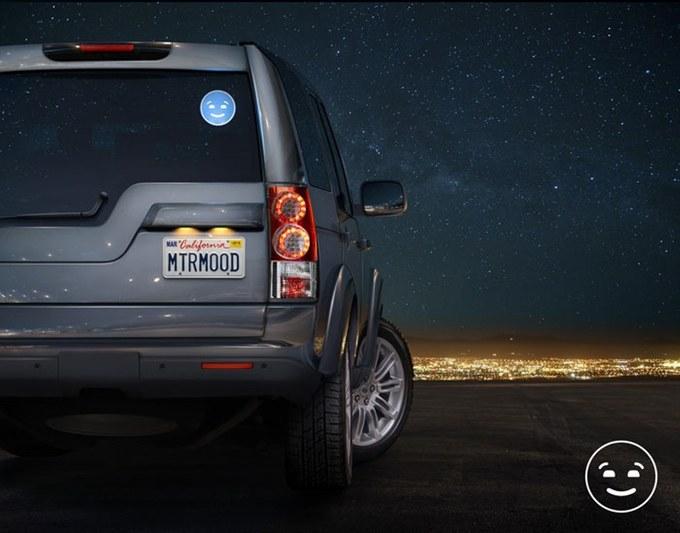

You’re on your grueling trek home from a long day at work and are, yet again, met with miles of standstill traffic. You realize construction is pushing the cars into your lane and, despite your frustration, you kindly let a car merge. Suddenly, a blue emoticon, smiling brightly, illuminates out of the car's back window as if to signal “thank you” from the driver. Amazingly, you’re a little less annoyed.
That’s the idea behind MotorMood, a simple yet potentially game-changing invention to lighten up the tensions and stress that come with driving. Available in blue, pink and green, MotorMood is accessible with just the touch of a button and can serve as a signal to tailgating drivers.
“We are creating light-up emoticon faces for your car that allow you to say thanks to other drivers on the road,” said the company's marketing director, Kina De Santis. “It’s a simple and powerful way to make driving a little more human and a lot more fun.”
It’s also painless to set up. The emoticon face attaches to the inside of a vehicle’s rear window using removable adhesive clips, while the remote that triggers illumination slides under the driver’s sun visor for easy garage-button like access. The driver can then press the button atop his or her sun visor to trigger the emoticon to light up for six seconds, before it automatically becomes dull again.
The MotorMood is $19, plus $5 for each additional color piece desired. MotorMood is a Kickstarter project which has already received pledges of just under $50,000, but the site says the project will only be funded if at least $130,500 is pledged by the end of July. The company needs to see that the interest is worth outsourcing to its plastic injection molding facilities in China.
The company is incentivizing consumers to pledge money toward MotorMood by offering VIP experiences to those who give a certain amount of money. If users pledge $10,000, they’re put up in a hotel for three nights and taken to Disneyland, Universal Studios and the San Diego Zoo. For $1,000, a backer gets a trip to Disneyland and two nights in a hotel.
MotorMood originated after the company president, Jesse Kramer, was fed up with his Los Angeles commutes. It occurred to Kramer that if more people said "thank you," then drivers would feel encouraged to drive more politely, the company's Kickstarter page says. Studies have supported Kramer’s theory with a University of Bristol report demonstrating that aggression and anger are reduced in teens who are exposed to happy faces. Another study from Flinders University in Australia suggested “the pattern of brain activity triggered by looking at an emoticon smiley face is now the same as when someone sees a real smiling human face."
MotorMood has also suggested that the traditional smiley emoticon is not where the company will stop. Once it reaches the goal of $200,000 funded, the business will introduce a winky face so drivers can flirt with each other on the road. There’s also a “mystery reward” if the company gathers $250,000.
“What we’re offering today is just the first step,” said Vice President Alex Sewell. “Our goal is to make driving more social, safe and fun through a universal car to car messaging and identity platform.”
Image credit: MotorMood, Kickstarter
Can a Tuktuk Ride Change the World? (Meet the Pilgreens)
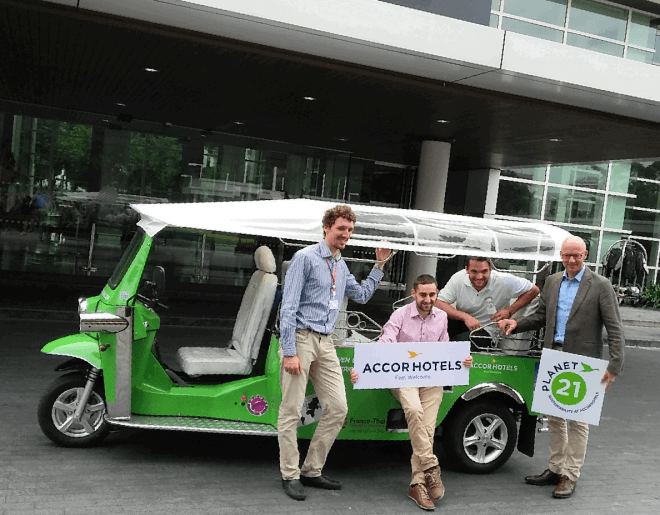

If changing the world for the better was easy, we’d all do it. But it isn’t. It’s incredibly hard. But thinking that you can make a difference is audacious. It takes a sort of beneficent arrogance to set out to push humanity in a positive direction. To believe you will succeed is madness, but to believe otherwise is to surrender. I think of giving up as a form of death, so I’ll gladly side with the crazy ones who are trying to make things better.
The world needs change as we’re headed toward multiple planetary boundaries, so someone needs to take the wheel and point us in a better direction.
I was invited to an intriguing event last Friday where I learned about the plans for something audacious. Something crazy.
Let’s start with the details:
- 1 electric tuktuk, an auto rickshaw commonly used in Asia
- 1 solar panel
- 3 friends (Remy, Karen and Ludwig, aka the Pilgreens)
- 4 months
- 16 countries
- 20,000 kilometers (around 12,400 miles)
As you may have guessed by now, the Pilgreens are going on a trip, and it’s no ordinary one. They’re going to take an open-air, electric tuktuk on a journey from the College of Management Mahidol University (CMMU) in Bangkok, Thailand, (where Karen and Ludwig just finished their final year of graduate school), to the university in Toulouse, France, where the three friends met.
Their trip is scheduled for roughly 12,400 miles (assuming they don’t make any wrong turns), with a vehicle that can go about 111 miles between charges. (What could possibly go wrong?!)
[embed]https://youtu.be/Z8bkOlXKI5M[/embed]
I was fortunate enough to sit down for lunch with the Pilgreens at the Pullman Bangkok Hotel for the project launch event last Friday (Accor Hotels is the project’s primary sponsor). They seemed to be easy-going, fun-loving guys. Had I met them under different circumstances, I would not have imagined they were setting forth on such an incredible trip. But they’re driven by something meaningful – a desire to make a real difference in the world.
The vision guiding their trip is “to be a global driver of electric mobility through the promotion of sustainable projects in developing countries.” Connecting that with the act they’re getting ready to undertake may come across as madness, but it’s not thoughtless madness. It’s the kind of thing which just might make a difference.
The Pilgreens may have started with the outlandish idea of “What if we drove an electric tuktuk to France?” But they’ve followed up on that idea by bringing the project to fruition, as well as putting together an integrated plan for connecting with an audience and getting that audience to engage with the project.
And completing “Mission TukTuk” is not the end goal. It’s meant to be the ignition of a movement. Along with issuing weekly calls for “green actions” by those following their exploits, the Pilgreens’ trip will leave a legacy in the form of a documentary, as well as the NGO which they’re starting. I’m excited about following their journey, and so I’ve chipped a few dollars in on their Kickstarter project (they still have a bit of equipment to buy for the documentary), and I hope you’ll consider joining me in doing so.
I wrote the intro to this before having a thorough look at the Pilgreens’ website. I found that the bottom of the page paraphrases an old Billy Joel song, “You may think ‘They are crazy,' and you may be right.” I’ll finish the line by adding: but it just may be three lunatics we’re looking for!
Here’s wishing good luck and godspeed to the Pilgreens. Let’s hope they find us a route to a more sustainable world.
Image credits: 1) The Pilgreens 2)LinearToCircular.com
Video: Brendan Doherty, Inward Point on "The ROI of Sustainability"
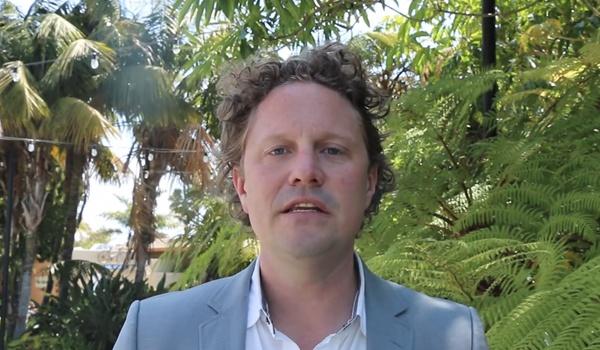

This article is part of a series on “The ROI of Sustainability,” written with the support of MeterHero. MeterHero helps companies and organizations offset their water and energy footprints through consumer engagement. To follow along with the rest of the series, click here.
At Sustainable Brands 2015, we asked thought leaders to define the ROI of Sustainability in their words. In this video, Brendan Doherty of Inward Point shares some thoughts.
https://youtu.be/EWt09IGPLEQ
About Brendan Doherty: Brendan's helped government leaders in Africa and Asia better serve their citizens, and now helps business and non-profits enhance their brand story and audience connectivity. His clients include Media Monks, Comcast, Deloitte, Rocket Fuel, ASU, Kellogg Business School, and Riverkeeper. He spent over 10 years in the hospitality industry before earning his law degree and joining the U.S. State Department to advise senior officials on human security globally.
Among his accomplishments, he created a multi-million dollar public-private partnership with Fortune 500 companies and helped launch a presidential initiative with 40+ heads of state at the United Nations. He remains a Senior Advisor to the Public International Law & Policy Group, where he advises rebels, governments, civil society, and the UN on constitution drafting and peace negotiations. He is also a Term Member with the Council on Foreign Relations, a Truman National Security Fellow, an Advisor to Impossible 2 Possible, and a member of Riverkeeper's Junior Council. He grew up on the Atlantic Ocean and lives in Brooklyn.
Research highlights new approach to tackling unethical behaviour


Middle managers will mirror top management’s bad behaviours, regardless of how ethical they are as an individual, new research from Rotterdam School of Management, Erasmus University shows.
The research, conducted in partnership with Cambridge University, shows that in cases of unethical leadership at the top of an organisation, middle managers will treat their subordinates unfairly if the social and spatial distance between them and the top management is low. In turn this will lead to employee dissatisfaction, lower organisational commitment and increased employee turnover.
In contrast, the effect is reversed if the social and spatial distance between managers and top management is high. Middle managers, who are unfairly treated by their bosses, will treat their employees fairer if, for example, they are based in different offices or buildings from their managers, and the social distance is high.
Dr. Gijs van Houwelingen, author of the study, commented: ‘’ We demonstrate that higher level management unfairness can have detrimental effects throughout the organization and it is passed down from high management to middle management, but only if the spatial and social distance is low.
"It is crucial that organisations understand the threats of overly close and highly interdependent relationships between lower and higher management in the organization. Managers at all levels in any organization need to strike a balance between a certain sense of closeness to ensure efficiency, and some sense of distance to ensure that negative top-level behaviour does not spread unhindered through all layers of the organization.”
See more here.
Do Me a Favor This Independence Day...


Dear readers, please excuse this small break in your regularly scheduled triple-bottom-line programming.
Though we pound the sidewalk day-in and day-out making the business case for sustainability, the fact is that we at TriplePundit care quite a bit about themes like equality and justice outside the office, too. Sometimes we work to make the business case obvious in the hopes that equality and diversity in the workplace will make for a more equitable society -- like in cases where we drive home the point that diversity makes for a stronger, more resilient, organization. Sometimes we stay silent while a tragedy like the Charleston Church shooting sweeps the nation, because we aren't sure what to say or our how our voices will contribute to the conversation.
And sometimes, like when that inexcusable and simply unexplainable act of hatred and violence is followed by a series of arson attacks on black churches across the South, it becomes time to speak out whether or not it is strictly our place.
Arson as a means of racial violence is an intimidation practice almost 200 years old. The most recent fire comes at a church that was destroyed by an arson attack the KKK claimed in 1996. [Update: this fire was found to be caused by lightening.]
"This is a systematic attack against the black church," the Rev. Anthony Evans, president of the National Black Church Initiative, told USA Today. "We are on alert status." The National Black Church Initiative is a coalition of 34,000 African-American churches, a group all-too-familiar with the ways racial violence and hatred spread.
I need to make this clear. What we have here is a country where over 100 unarmed black people were killed by the police in 2014. This is so unusual that the BBC even ran an inquiry to try to understand why U.S. police keep killing unarmed black men. This month, a hate-filled individual went to a Bible reading, sat and presumably prayed for an hour, and then executed nine people. The suspect, Dylann Storm Roof, was quite public about the fact that he intended to "start a race war," and he has not shown any public remorse for his act. Now, seven churches across five states have caught ablaze. While not every fire can be definitively tied to arson, the numbers are too troubling for all seven churches to be coincidental or accidental fires.
Violence against black people. And then, in retaliation, more violence against black people.
I don't stand for the more insidious and subtle forms of racism that impact our neighbors of color every day, and I certainly don't stand for this. I've been silent too long, scared to say the wrong thing.
Tomorrow is Independence Day in America: the day we won freedom from colonial rule. We celebrate this day with fireworks, family, barbecues and parades. One day, perhaps, we'll be free from racially-motivated violence too.
When you see your friends and family tomorrow, please do me a personal favor and mention the tragedies that have recently befallen the black community: the arson, the church massacre, the police shootings. Use whatever words make sense to you, and simply have a conversation. I know it's bad form to talk about controversial subjects at family gatherings, but I hope we can all agree that standing against hate crimes is not exactly controversial.
Let's not sweep this under the rug. Let’s show the black community that this tragic string of violent attacks is not their cross to bear alone.
I'd love to hear about your conversation! Tweet me @jenboynton using hashtag #JustAChat, or email me at [email protected] and tell me how it went.
A Bad Week for Fracking, Another Black Eye for Natural Gas
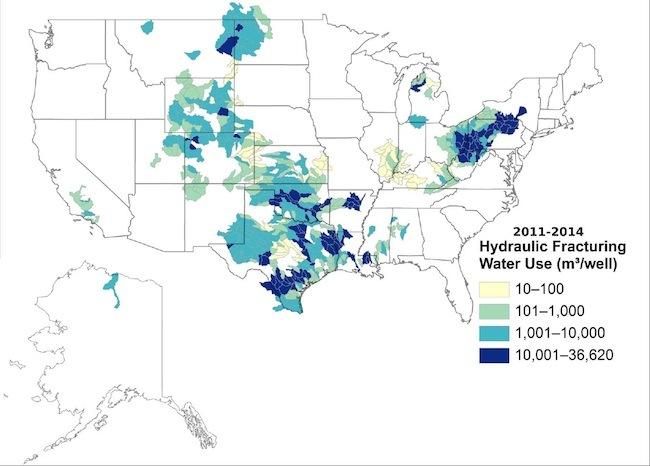

Natural gas is still part of President Obama's "all of the above" energy strategy," but businesses seeking to burnish their CSR profile with this relatively clean-burning fuel could be shooting themselves in the foot. Evidence continues to mount that the natural gas supply chain carries an enormous amount of environmental baggage as well as community welfare issues.
This week was a particularly bad one for the natural gas industry, with the release of two government reports in the U.S. and one in the U.K.
1. The USGS fracking report
The problem with natural gas is primarily due to the rapid expansion of fracking. Short for hydrofracturing, this formerly little-used drilling method involves shooting great quantities of chemical brine underground at high pressure, to jar gas (or oil) loose from shale formations.
Among other issues, fracking typically involves a great amount of water, which raises critical water competition issues in areas that are experiencing drought.
Some of the water used in fracking is lost forever deep underground. Great quantities do come back to the surface in the form of wastewater, but that is typically disposed in injection wells, which could also result in water loss.
Earlier this week, The U.S. Geological Survey (USGS) issued the first ever national report that details the amount of water used in oil and gas fracking.
The survey looked at at water volumes used in more than 263,859 oil and gas wells drilled between 2000 and 2014.
The survey found that while some fracked wells involved as little as 2,600 gallons, the amount ranged up to 9.7 million gallons depending on whether the well involved horizontal drilling:
...horizontal wells also generally require more water than vertical or directional wells. In fact, in 52 out of the 57 watersheds with the highest average water use for hydraulic fracturing, over 90 percent of the wells were horizontally drilled.
Though horizontal drilling accounted for less than half (about 42 percent) of wells in 2014, the USGS noted that the number of wells involving horizontal drilling has increased since 2008.
As part of a regulatory toolkit, the survey indicates the need for more attention in areas where water use is higher, where competing interests such as agriculture already account for considerable use, and where communities face earthquake risks:
This spatial variability in hydraulic fracturing water use relates to the potential for environmental impacts such as water availability, water quality, wastewater disposal, and possible wastewater injection-induced earthquakes.
2. The New York State DEC fracking report
New York State's longstanding moratorium on fracking appears to have transitioned into an outright fracking ban, now that the state's Department of Environmental Conservation (DEC) has released the results of its seven-year fracking study.
In addition to direct impacts, the study underscores the ripple effect of increased drilling on industrial infrastructure in rural upstate New York:
...This growth would in turn generate the construction of natural gas pipelines, gathering lines, compressor stations and other associated infrastructure beyond the well pad. This ancillary activity has the potential to create adverse impacts to state - owned lands, freshwater wetlands, forests and other habitat due to fragmentation, streams where pipelines cross, air resources (from Findings Statement, Page 9 compressor stations), visual resources, agricultural lands, threatened and endangered species, and the spread of invasive species...the drilling, hydraulic fracturing, and production phases involve other potential environmental impacts in areas such as spills, cuttings disposal, waste disposal, air emissions, and community character.
In effect, the DEC has provided seven years worth of study that backs up the environmental stewardship issues expressed in the recent encyclical of Pope Francis.
3. The DEFRA Fracking Report
The British government has also undertaken a comprehensive fracking study under the auspices of the Department for Environment, Food & Rural Affairs (DEFRA). It was previously released in redacted form.
The full version is now out in public, and as reported by The Guardian, the DEFRA fracking study echoes New York's DEC study. It paints a picture of destructive impacts on rural communities that host fracking operations:
An official assessment of the impact of fracking, it warned that leakage of waste fluids could affect human health through polluted water or the consumption of contaminated agricultural products.
According to The Guardian, while the DEFRA study notes the job-creating potential of fracking, it also describes the potential for a seven percent drop in residential property values within a mile of fracking sites, while those within a five-mile radius could be faced with higher insurance costs.
The study also takes note of the U.S. experience with environmental impacts from fracking wastewater accidents, and the potential for contaminants to reach humans through the food chain.
4. Not the last straw for fracking, but...
Despite the rising tide of pushback, natural gas fracking is likely to be part of the energy landscape for the foreseeable future.
However, it is becoming increasingly clear that businesses seeking clean alternatives to coal and petroleum fuels should skip over natural gas and go straight to biogas, solar, wind, and other forms of renewable energy.
Image: Courtesy of USGS.
The Sustainable Economy and Decent Work for All
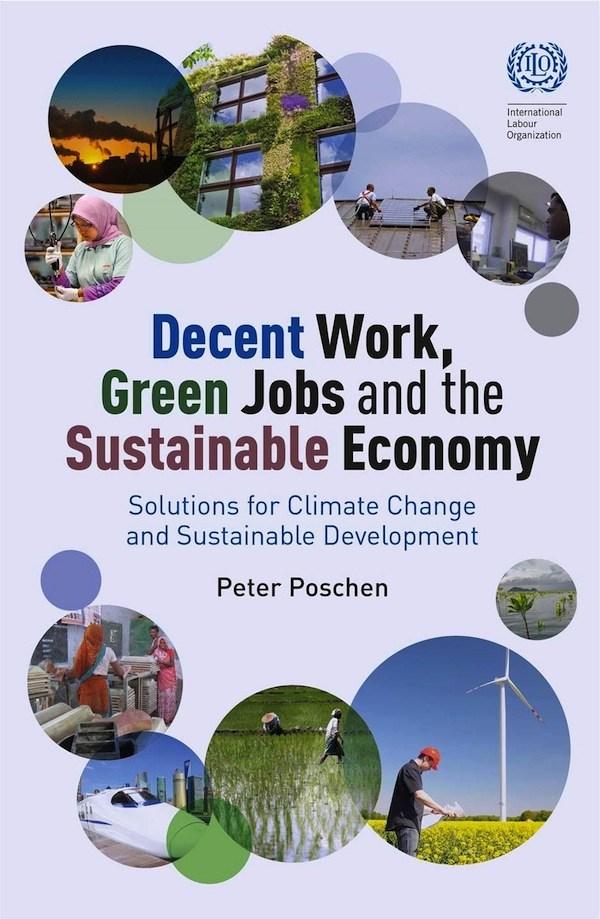

Editor's Note: This is an excerpt from the new book, "Decent Work, Green Jobs and the Sustainable Economy," Greenleaf Publishing, available in stores now and online.
By Peter Poschen
We face two defining challenges in the 21st century: ensuring environmental sustainability and turning the vision of decent work for all into a reality.
Environmental degradation and resource depletion have become ever more visible and pressing challenges, as the human population keeps expanding and material demands increase, pushing against the limits of what the planet can provide sustainably.
The overuse of natural resources, such as forests, fish and clean water, is increasingly exceeding planetary boundaries. The biggest environmental challenge by far, and one that threatens to undermine the very basis of human civilization if allowed to continue unchecked, is climate change. The climate crisis also connects in powerful ways with many other environmental concerns such as water availability or biodiversity.
At the same time as environmental concerns have risen to unprecedented prominence, there are also urgent social and economic challenges. Even as the size of the world economic product has more than tripled since 1990, securing adequate and decent employment for all jobseekers remains one of the biggest problems policy-makers face, especially in the wake of the global financial crisis, which expanded the ranks of the unemployed and those in vulnerable employment conditions.
The number of unemployed people rose from 170 million before the onset of the world financial crisis in 2007, to a projected 206 million in 2014, and may further rise to 215 million by 2018. macy mk bags Youth unemployment was pegged at 74.5 million in 2013 and is not expected to fall significantly over the next five years.
It should be noted that the unemployment rate has significant shortcomings in indicating the true degree of workforce underutilization, in the form of disguised and unrecorded unemployment and of underemployment. Furthermore, the same rate of unemployment can create highly different degrees of social damage, depending on a country’s social protection systems.
Over the past two decades, there has been a vigorous debate over the precise nature of the relationship between the environment and the economy. As climate action grows urgent, some observers warn that economies will suffer as a result of moving toward sustainability.macy's mk purse sale But it has become clear that economic prosperity and employment depend in fundamental ways on a stable climate and healthy ecosystems. This book shows that both the environmental and the socio-economic challenges are urgent and that they are intimately linked. They can and must be addressed together.
Not only is the situation environmentally unsustainable, it has substantial economic and social costs. The natural processes and systems which are vital to the enterprise and the livelihoods of people are being disrupted, and the damage to economies and to society caused by environmental degradation and climate change threatens to undo many of the gains in development and poverty reduction achieved over the past decades, including progress towards achieving the Millennium Development Goals (MDGs).
The longer we wait to address this, the worse it will get: with global unemployment levels exceeding 200 million, almost one in three workers living in working poverty and 5.1 billion people without access to essential social security, the addition of rising costs and disruption associated with environmental damage could further weaken social cohesion and increase the instability already present in a number of countries.
Employment that contributes to protecting the environment and reducing humanity’s heavy environmental footprint offers people a tangible stake in a green economy. The pursuit of so-called green jobs will be a key economic driver as the world steps into the still relatively uncharted territory of building a low-carbon global economy. “Climate-proofing” the economy will involve large-scale investments in new technologies, equipment, buildings and infrastructure, which will provide a major stimulus for much needed new employment and an opportunity for protecting and transforming existing jobs.
Environmental constraints, climate change and the transition to a sustainable, low-carbon economy will have profound impacts on production and consumption patterns, and on enterprises and workers. The necessary shift will be impossible without a pervasive effort towards the greening of enterprises across the economy.
In addition, reducing greenhouse gas (GHG) emissions implies shifts within and between economic sectors as well as between regions. Output and employment in low-carbon industries and services, in waste management and recycling, and in the restoration of natural capital will grow. Energy and resource-intensive sectors, on the other hand, are likely to stagnate or even contract. With well-designed adaptation measures, climate resilience can go hand in hand with job creation and poverty reduction.
Green jobs can serve as a bridge between the United Nations' first Millennium Development Goal (MDG) (eradicate extreme poverty and hunger), seventh MDG (ensure environmental sustainability) and future U.N. Sustainable Development Goals (end poverty in all its forms everywhere) and eighth MDG (promote sustained, inclusive and sustainable economic growth, full and productive employment and decent work for all).
The multiple economic, social and environmental crises besetting the world in recent years have led to a new sense of urgency. The U.N. Conference on Sustainable Development (UNCSD) held in Rio de Janeiro in 2012 (Rio+20) discussed the green economy in the context of poverty reduction, sustainable development and environmental governance.
The outcome document of this largest U.N. conference ever stresses the urgency of sustainable development and the fundamental role of decent work in achieving it. This is the culmination of a remarkable evolution in the way the relationships between the environment, the world of work and social development are considered in policy statements, both at the U.N. and at the International Labor Organization.
For more on how a low-carbon economy can help pave the way for decent work for all, pick up a copy of "Decent Work, Green Jobs and the Sustainable Economy."
Peter Poschen is the Director of Job Creation and Enterprise Development at the International Labor Organization (ILO). He has over 25 years' experience in international sustainable development, with a focus on the social dimensions of the use of natural resources.
His book provides a comprehensive overview of climate change, sustainable development and decent work. It addresses the challenges of achieving environmental sustainability and turning the vision of decent work for all into a reality. It also demonstrates that green jobs can be a key economic driver, as the world steps into the largely uncharted territory of building a sustainable and low-carbon global economy. Author Peter Poschen shows that positive outcomes are possible but require a clear understanding of the opportunities and challenges, as well as country-specific policies that integrate environmental, social and decent work elements. The opportunities for gains may in fact be greatest in developing countries and emerging economies.
What is the TPP? If You Don't Know, It's Time to Find Out
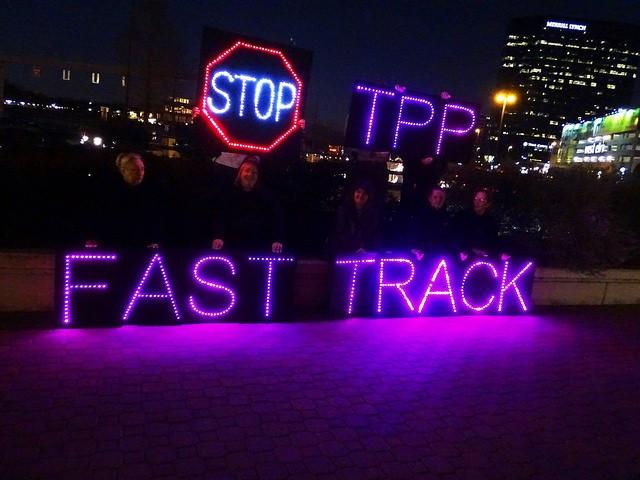

From The Sierra Club
Right now, a trade deal is being negotiated between the United States and 11 other countries called the Trans Pacific Partnership, or TPP, that would be the biggest trade deal in history. The agreement was brought to the next level this week, when President Barack Obama signed legislation giving him the authority to "fast-track" the deal.
The TPP covers more than just traditional trade issues, like tariffs. According to analysis of draft copies released by Wikileaks, it impacts jobs, access to affordable medicine, food safety, environmental standards, and so much more. To top it all off, it’s being negotiated in secret. The text is unavailable to the public. Worse still, many say those that do have most influence in shaping the pact are giant corporations and big polluters who can manipulate the language to benefit only themselves, not the American people.
From the Sierra Club's point of view, the TPP and trade deals like it can cause harmful effects to almost every aspect of our lives -- from our rights to clean air, food and water, to our ability to receive affordable medication, to our very own jobs being sent overseas.
Below is a video from the Sierra Club explaining how this trade deal could spell out disaster for the environment and the climate. The Sierra Club is devoted to protecting the planet and the American voice. We believe that we should have the right to know how increased trade will affect our neighborhoods, communities and livelihoods. And we aren’t alone. Other environmental groups, labor unions, consumer safety groups and even celebrities agree that the TPP would be damaging to the American public and are taking a stand against the flawed trade deal. People across the country are saying “NO” to the TPP, so stand with us and have your voice heard -- we need a new model of trade that protects workers and the environment, not more toxic trade.
https://www.youtube.com/watch?v=BYm6nGCF46I
Image credit: Flickr/Backbone Campaign
Improving Ethics in the Insurance Industry
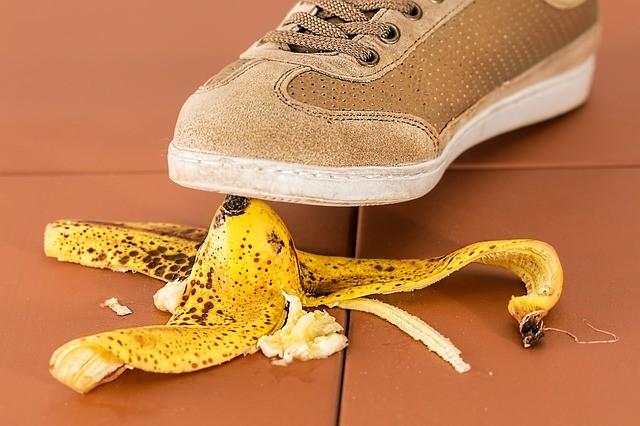

By Marco Bendinelli
Whether it is for legal, personal or humanitarian reasons, ethics can't be ignored, and this is especially true for the insurance industry.
Unfortunately, the current system isn't perfect, and newspapers are often rife with stories of people falling out with their providers for a range of issues. An annual ethics poll by Gallup, for instance, has always seen insurance companies fare poorly. In over 35 years, no more than 15 percent of the participants considered the insurance industry to have “high ethical standards." Clearly, this is something that needs to change.
A quick overview
Much of the ethical issues in insurance are a case of utilitarianism and deontology. The former perspective focuses on the greater good or collective, while the latter believes in personal duties. Insurance businesses are arguably utilitarian, as they look at the larger picture.
An individual customer, on the other hand, is somewhat deontological; they consider their needs first and foremost, with no relevant interest outside their insurance policy. Many problems occur when insurance providers fail to understand these concerns, conducting practices that simply ignore personal objections.
Demonstrate ethical knowledge
A recent (June 2015) survey conducted by Business Insurance, partially in response to the low results seen in the Gallup Poll, showcased two very important figures:
- The majority (over 90 percent) of people in insurance and risk management believed the industry is “largely ethical”
- Just over half (55 percent) claimed the public considers the industry as “largely unethical”
Since this poll asked people within the industry, unlike the Gallup Poll, it is clear companies believe they are acting ethically, while also recognizing the public does not believe them. The best way to resolve this, then, is to demonstrate ethical knowledge. If companies can offer in-depth ethical knowledge, even if it is just a page or a clear statement online, they might be able to change public consensus.
Full disclosure of data
One of the major problems in the insurance industry is a bias toward minorities with a lower incident rate. Take motor vehicle insurance, for instance, where certain subsets of drivers receive lower rates, while others receive higher rates, such as young, male drivers. Any given driver may meet these criteria, but that doesn't mean they reflect those standards. Why should good drivers suffer because of the majority?
However, insurance companies have done extensive research on these subjects, a lot of which simply isn't published or disclosed to the public. As a result, customers can incorrectly assume a company is just being unethically biased towards them. Sharing this information, on the other hand, can show the reasoning and logic behind any decision.
Individual assessment
On the other hand, it might be beneficial to remove this practice entirely. By judging people on their individual merits, records and history, insurance providers can offer coverage to their customers on an individual basis. This is a core foundation of medical coverage, for instance, so why not apply it to other areas?
Regular review
Whether companies provide rates to specific minorities or offer an individual assessment, some form of regular review process needs to take place. Years of good behavior are often rewarded with better rates, and this is a process that can be spread more widely.
Similarly, as mentioned before, certain minorities are often labelled in a demeaning way for the purpose of insurance. This may have been the case during the initial assessment, but are regular reviews being taken to ensure this is the case? If young drivers get involved in fewer incidents, or crime rates drop considerably over the years, do the respective insurance businesses reflect this in their policies?
The fine print
Hiding things in the fine print may be legal, but it's questionably ethical. The insurance industry is often guilty of many examples of this, such as increasing the annual renewal costs after the first year, or being very specific about what does and doesn't come under the excess. Various medical procedures are considered cosmetic or unnecessary depending on where you live, so how do you know your insurance provider will cover a specific operation or procedure?
Likewise, nobody likes finding out their company is using their money for intentions that go against personal belief. Many companies use under-writers, secondary companies and other means to spend money, create the illusion of competition or simply serve their own interests.
Regulations
Can better regulations help enforce ethical standards? If someone is fighting for insurance companies to pay for an important procedure, they can't always wait for a lengthy legal process.
Escrow, however, is a prime example of something that works and is ethically sound. Using an escrow account takes the money out of the providers’ hands, but not directly into the policy holder's. The customer knows the money is available, and the escrow agency isn't under any obligation to please any party. Their role is to simply determine if the cost is covered under the policy.
The future
While many insurance companies are starting to drift with the current flow towards ethical consciousness, there is still a long way to go and a lot of room for improvement. Increased awareness toward ethical practices must take firm roots in the industry, and only then will insurance companies be fully viewed in ethical lights.
Image Credit: Flickr/Pictures of Money
Image Credit: Pixabay
Marco Bendinelli is an attorney and the founding shareholder at Bendinelli Law Firm. He is devoted to representing individuals who suffered injury or death caused by the negligence or wrongful conducts of others. He also finds time to motivate and inspire through his writings.